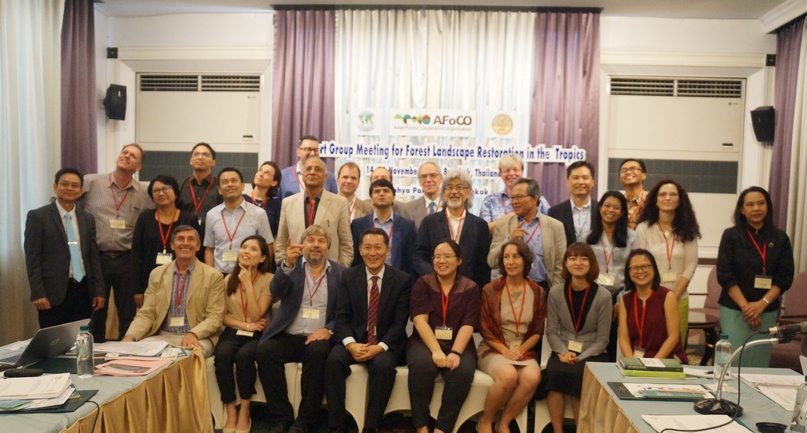Experts take stock of forest and landscape restoration
5 April 2019, Yokohama, Japan

Members of the First Expert Group Meeting for Forest Landscape Restoration in the Tropics. Photo: Royal Forest Department of Thailand
Forest and landscape restoration (FLR) is gaining momentum, with global commitments embodied in the Sustainable Development Goals (SDGs) and other processes and declarations. The World Resources Institute estimates the global restoration opportunity at more than 2 billion hectares of land worldwide, with 1.5 billion hectares suited for mosaic-type restoration and 0.5 billion hectares for large-scale forest restoration.
Several international organizations, including ITTO, have published technical and policy guidelines on FLR in the last couple of decades. In the meantime, new restoration frameworks and concepts have emerged, especially on the public-good and environmental functions of forest landscapes and the social dimensions and economic viability of FLR. The International Union for Conservation of Nature and the Global Partnership on Forest and Landscape Restoration are implementing the Collaborative Partnership on Forests (CPF)’s Joint Initiative on Forest and Landscape Restoration. As part of this initiative, the CPF has mandated ITTO to take stock of the ongoing FLR programmes of CPF members and to play an instrumental role in developing a comprehensive set of voluntary FLR guidelines.
Participants at the First Expert Group Meeting for Forest Landscape Restoration in the Tropics in Bangkok, convened by ITTO, the Asian Forest Cooperation Organization and Thailand’s Royal Forestry Department, reviewed the existing sets of guidelines and FLR processes, as well as restoration efforts worldwide. They reviewed FLR terms and definitions and discussed the focus and target audiences of the new FLR guidelines and their nature, scope, purpose and applications.
The revision will provide technical and policy guidance on restoring degraded tropical forests and forestlands with the aim of achieving a more sustainable approach to land use and increasing the social and ecological benefits of FLR. The focus will be on restoring functional forest ecosystems within landscapes so that forests can co-exist with other land uses in landscape mosaics.
Among other things, the expert meeting discussed the importance of formulating an operational guide to efficiently implement the following principles that were globally agreed in 2018: focus on the landscape scale; engage stakeholders and support participatory governance; restore multiple functions for multiple benefits; maintain and enhance natural ecosystems within landscapes; tailor to the local context using a variety of approaches; and manage adaptively for long-term resilience.
A second expert meeting on FLR in the tropics will be convened in June 2019.
Download the meeting report and the presentations made at the meeting: